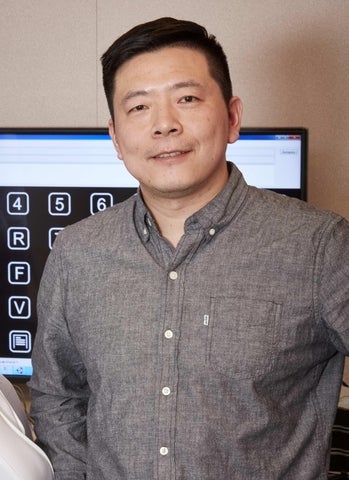
Ning Jiang
Contact Information
Links
Additional Information
Education
- B.E. Xi’an Jiaotong University, Xi’an, China, 1998
- M.Sc. University of New Brunswick, Fredericton, NB, Canada, 2004
- Ph.D. University of New Brunswick, Fredericton, NB, Canada, 2009
Research Interests
My main research interests is biological signal processing, such as Electroencephalogram (EEG) and Elecromyography (EMG). The purpose of processing these signals is to extract the movement intentions of human, and use these intentions to interact with external environment, such as computers, robotic devices, or even other humans. Currently, the emphasis of my research is on using the above signal analysis and processing tools for applications in neurorehabilitation engineering, through intelligent human-machine interfaces (HMI), including brain-computer interface (BCI), and muscle-man-interface (MMI). Specific applications that I am working on include upper limb prosthetic control (for amputees) and rehabilitation of motor functions for patients suffered stroke. I am also interested in the broader application areas as more general human machine interfaces in fields such as neural plasticity (cortical and peripheral), ergonomics, intelligent manufacturing systems and other related topics.
Advanced prosthetic control with Electromyography (EMG)
In recent years, there have been several media coverages on advanced multi-function upper limb prostheses, often hyped as ‘the thought-control artificial hands’ or ‘mind-control robotic hands’. Advanced mechatronics design, signal processing of the electromyogram (EMG) signal and innovative surgical procedures, such as the targeted muscle and sensory reinnervation (TMR and TSR), have been the driving forces behind these achievements. Nonetheless, despite the (somewhat misled) public enthusiasm of these latest artificial devices, there still exist significant challenges and obstacles these celebrated technical achievements in the media can bring real benefit to the general amputee population. There are several sophisticated multi-function prosthetic hand in the market, but almost all them can be controlled with decades-old EMG algorithm. Currently in the research community, there has been a new direction of research on dexterous myoelectric control mimicking the neuromuscular system by extracting nature control information from surface EMG with advanced algorithm, and I am one of world leading experts in this exciting direction. The aim of my research in this direction is to develop algorithms and control strategies that would offer amputees a nature and intuitive control of these sophisticated prostheses that will provide them with unparalleled autonomy and quality of life.
Real time Close-loop Brain Computer Interface for stroke rehabilitation
For the past several decades, Brain Computer Interfaces (BCIs) system has been developed for applications such as communications (e.g. virtual keyboard or wheelchair control) for highly disabled individuals, to replace their lost motor functions. However, despite of high expectations from the public, the practical social and economic impact of BCI has been extremely limited, at any at all. This is meanly due to the fact that the current systems can be beneficial only for an extremely small portion of population, e.g. locked-in patients. In my research on BCI, I took a different approach. My vision is to use BCI as a tool for rehabilitation of impaired motor function(s), not merely as replacement of lost motor function(s). To rehabilitate or restore impaired motor functions implies inducing neuroplasticity, or rewiring the nervous system, which is a very challenging tasks, and very few studies has demonstrated such a capability from a BCI system. The BCI system we proposed, however, has done just that. Our system explicitly exploited the Hebbian principle of associativity, which one of the underlying principles of neural plasticity. This new BCI system has the potential to be the technical basis of a patient-centric and patient-driven neurorehabilitation paradigm for stroke patients. Such a paradigm will be more cost-efficient and have better patient compliances than the current therapist-centric approach in clinical practice. We have developed series of algorithms for electroencephalogram (EEG) that can detect the intention of movement with latency of less than 500 ms. We also demonstrated that such a low-latency is the key factor in efficiently inducing cortical plasticity peripheral electrical stimulation (ES) is trigged by the BCI. With our system, only 30 BCI-driven ES, significant neurophysiological change, thus neural plasticity, was observed in healthy subjects, as well as a cohort of chronic stroke patients with motor deficiencies. Our work on this topic has won three consecutive BCI Award Global Top 10 nominations (2012, 2013, and 2014), the only group in the world to achieve this.